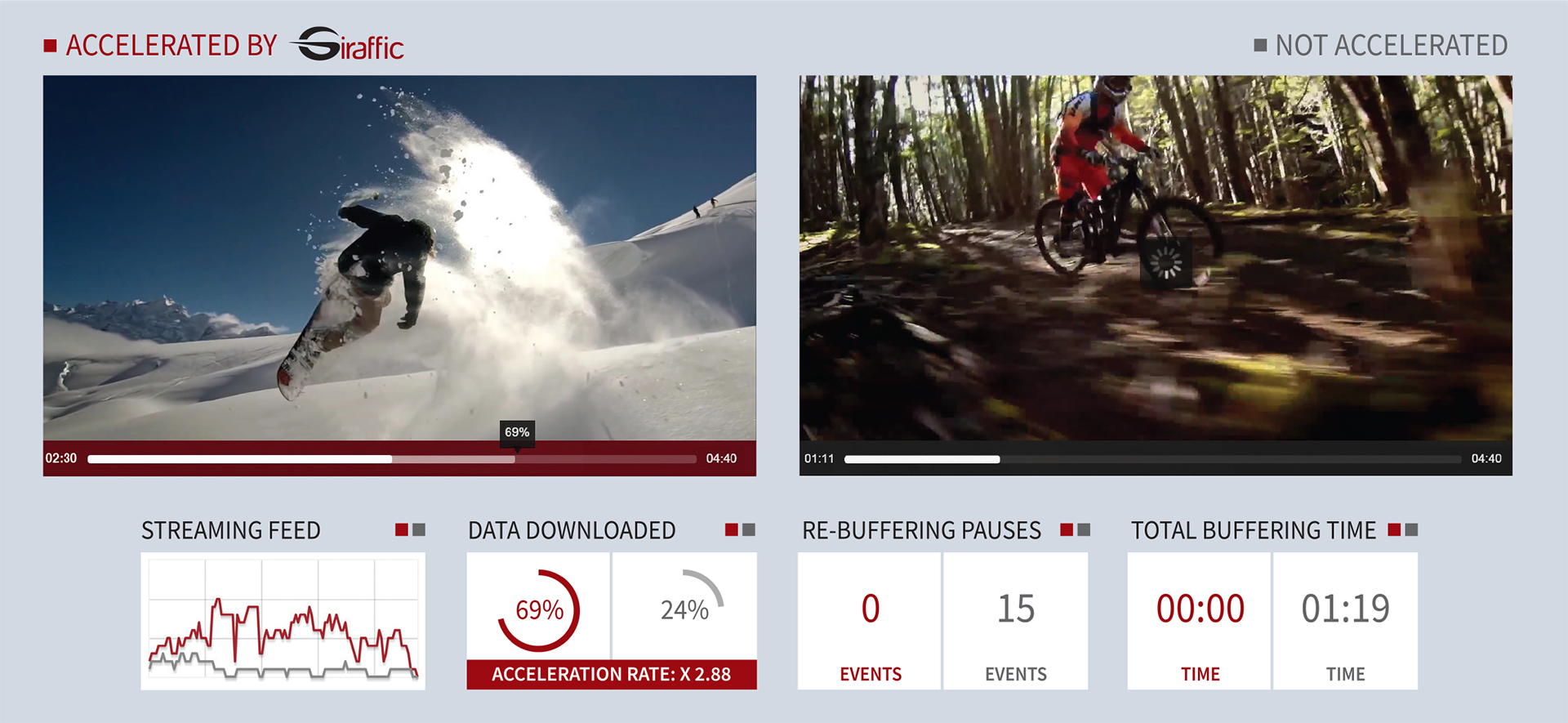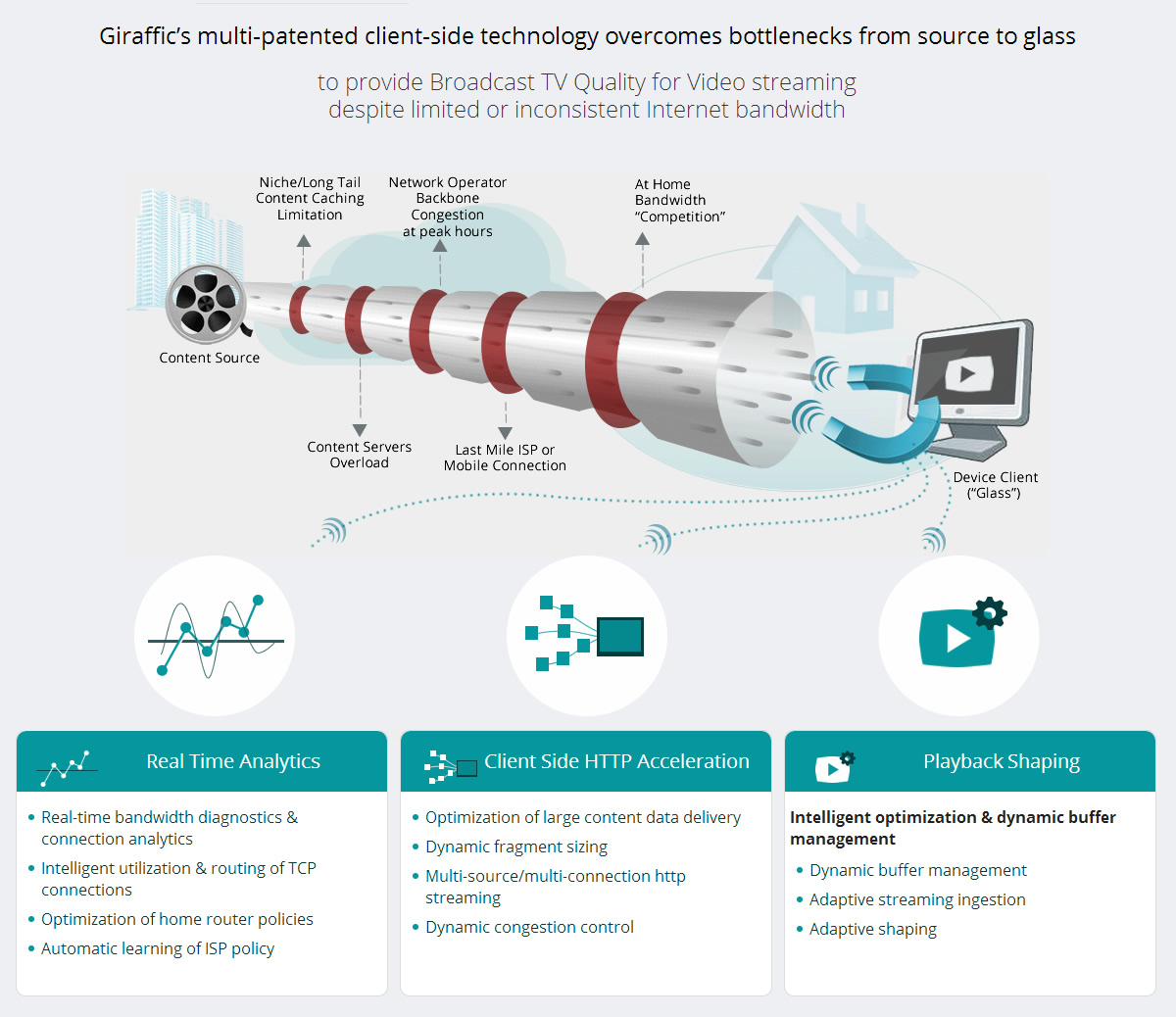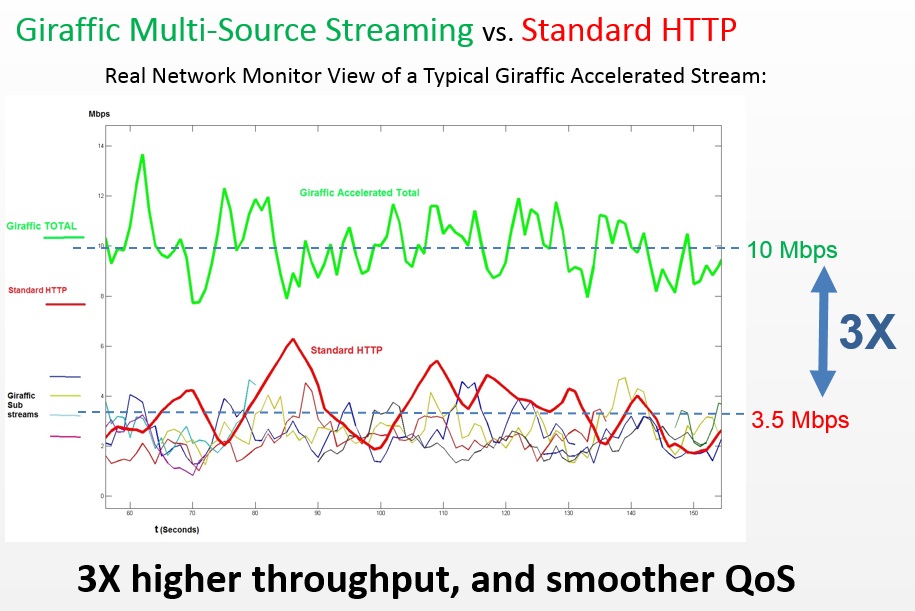Giraffic AVA Unlocks VR Streaming for Apps
Giraffic’s new Adaptive Video Acceleration (AVA) for immersive streams greatly improves the resolution and reduces buffering to help cut the VR cord.
Giraffic announced an extension of its adaptive video acceleration technology that considerably improves the stability and quality of streaming VR content. The company, known as the leader in AVA technologies for content service providers and consumer electronics device manufacturers, claims this acceleration improves Virtual Reality streams, even on lousy cellular or Wi-Fi connections, allowing immersive content service providers, manufacturers, and developers to provide perfect untethered, high-quality VR experiences, live-streaming offerings, and Giraffic AVA video-on-demand.

Giraffic AVA is the Solution for Unstable Connections
Giraffic Adaptive Video Acceleration is a software solution that help CE device manufacturers, streaming platform developers, and content service providers overcome unsteady cellular connections, network and Wi-Fi congestion challenges. The software improves adaptive bitrate playback and network throughput for video streaming requests and reduces buffering pauses considerably to allow uninterrupted higher-quality viewing experience without server-side or network integration.
The new AVA delivers customizable multi-streaming capabilities to support 360 degree and Virtual Reality video and it can work across split streams for each and every angle of a video. Additionally, AVA lets you customize the number of streams open during the video acceleration process in order to guarantee a better consumer experience.

Adaptive Video Acceleration for Virtual Reality Content
“VR revenues are expected grow at a compound annual growth rate (CAGR) of 73% over the next 5 years, however, in order to achieve this VR must provide users with a quality experience. Video is a bandwidth hog in the best of circumstances, VR video is a several magnitudes worse. VR video that has banding, artifacts, starts and stops, or worst of all, induces motion sickness as a result of the compression necessary to deliver it will quickly turn off VR users.”
Says Michael Goodman, Director Digital Media at Strategy Analytics.
Virtual Reality immersive videos and content generates up to 10 times higher bitrates, and this makes it almost impossible to stream on inconsistent and unreliable Wi-Fi or cellular networks. Giraffic AVA offers the best option to experience immersive VR content by improving the resolution up to 200% on network connections and by delivering a 300% longer viewing period with the best possible quality.

“In addition to smartphone-powered VR, we’re starting to see the industry shift towards wireless standalone headsets on the high-end devices. To view VR the way it’s intended, the experience must be uninterrupted, untethered and incredibly high resolution like UHD 4K content offers. With the VR extension of our AVA solution, we bridge this gap between the immersive app providers and the consumer’s devices worldwide.”
Says Yoel Zanger, CEO of Giraffic.

Giraffic Outsmarts Internet Bandwith Limitations
AVA is currently available to content developers through a simple SDK integration, and for consumer electronics (CE) manufacturers with device-side integration. Demonstrations will be held at the CES 2017 at the Westgate Hotel.
https://virtualrealitytimes.com/2017/04/14/giraffic-ava-unlocks-vr-streaming-for-apps/https://virtualrealitytimes.com/wp-content/uploads/2016/12/Giraffic-Adaptive-Video-Acceleration-600x478.pnghttps://virtualrealitytimes.com/wp-content/uploads/2016/12/Giraffic-Adaptive-Video-Acceleration-150x90.pngSoftwareTechnologyGiraffic’s new Adaptive Video Acceleration (AVA) for immersive streams greatly improves the resolution and reduces buffering to help cut the VR cord. Giraffic announced an extension of its adaptive video acceleration technology that considerably improves the stability and quality of streaming VR content. The company, known as the leader in...Anushay QaiserAnushay Qaiser[email protected]Contributor gobet slot daywinbet daywin gobetasia gobet daywinbet daywinbet gobetasia daywinbet gobetasia Virtual Reality Times - Metaverse & VR
